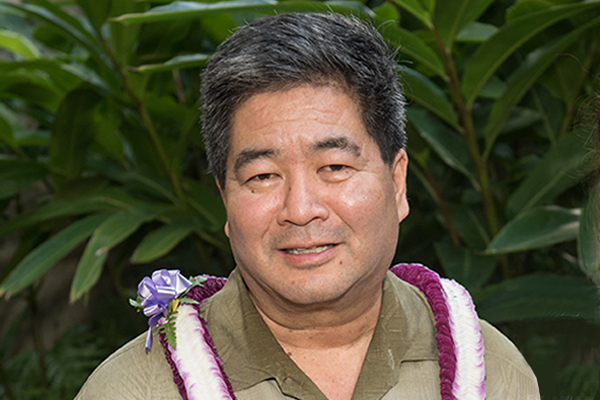 |
Advisor Highlight: Gregg Takara
Learning from Experience: Win-win Strategies for Giving
Gregg Takara understands philanthropic giving from every angle. Today he’s an experienced expert in estate planning and financial advising. But 30 years ago, when he was just starting his career, it was his own family who was in grave need.
A TIME OF NEED
“My fiancé’s mother, Gladys, needed a liver transplant urgently,” he says. An organ donor had been found, but the procedure wasn’t performed in Hawaiʻi.
“The family didn’t have the resources to send her to San Francisco. I was just starting off in my career, so I had no money,” he says with a laugh. “I was with Hawaiian Trust at the time, and worked with Bishop Trust, too, so I had some involvement with HCF and I knew what they were all about.” He applied and was approved for a $2,500 grant administered at the time by HCF under the Person In Need (PIN) Program. (Today, that program has been replaced by the Kūpuna Aging in Place Fund.)
“It was a big, big relief,” he recalls. “She was in dire condition—without a transplant, she maybe had months to live. Ultimately, she passed away earlier this year. So that transplant gave her 30 years—and decades of memories with their grandma for my kids.”
EXPERIENCE GIVING BACK
That experience inspired Takara to create a fund himself, subsidizing travel for the medical needs of Kauaʻi residents. (Not only had Takara moved to Kauaʻi, becoming a part of that community, but the donor of Gladys’ liver was from the Garden Island.) “The Gladys Fund was created to give back to the Kauaʻi community and HCF for helping my family,” he says. But the fund also informs Takara’s work helping his clients find their philanthropic passion. “Many of my clients have different reasons for wanting to give back,” he says. “However, a common theme for giving is due to life experiences. The Gladys fund allows me to share an example of why and how I created a fund.”
MULTIPLYING WINS
Takara also likes to help his clients find solutions where wins are multiplied. “I like to suggest giving that benefits young people. It’s an investment in our community because, hopefully, they go on to return that favor in the future,” he says.
Another win-win he advises is donation bunching, a tax strategy that consolidates your donations for multiple years into a single year, to maximize your itemized deduction for the year you make your donations. This strategy has become increasingly relevant and useful since the Tax Cuts and Jobs Act of 2017 roughly doubled the standard deduction through 2025.
And, if his clients have the means, he has an even better piece of advice for philanthropic giving: “Many of my clients give to multiple charities, making smaller $1,000 to $2,000 gifts, totaling around $10,000 each year,” he says. “Because total itemized deductions are less than the standard deduction, these clients are not getting the full tax benefit of giving. So we can recommend a one-time $100,000 gift to a donor advised fund (DAF), ideally from appreciated securities (to avoid the capital gains to their income). They benefit from a larger itemized deduction that year and can still gift $1,000 to $2,000 to various organizations annually. It’s a win for the charities and for my clients.”
From needing a grant to creating a fund, Takara has learned from his own journey how to help his clients find effective and rewarding philanthropic solutions that benefit their community.
|